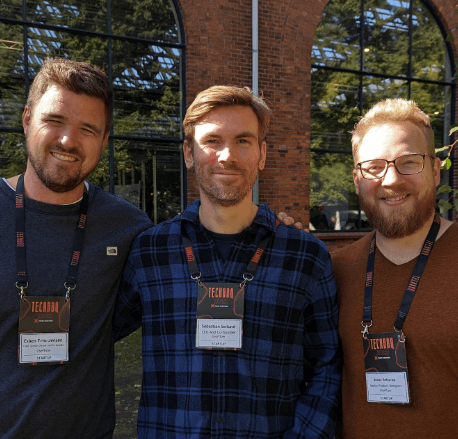From Zero to $1.5K MRR: Simon’s 10-Month Journey with CartFox.io


Business Description
Table of Contents
Navigate through the case study sections
Executive Summary
Case Study Content
Introduction
Simon Terbovšek was running his own small online shop when he kept seeing shoppers add products to their carts and then disappear. Rather than ignore that leak, he coded a quick script to send reminders and offer discounts. After noticing a spike in recovered orders, he realized this could be a standalone product. CartFox.io launched as a simple SaaS that tracks abandoned carts, sends tailored emails, and nudges shoppers back to check out.
The Early Problem
In e-commerce, roughly 70% of carts get abandoned. Simon dug into why: shipping fees stacking up, clunky checkout steps, or customers just browsing. He experimented with free shipping prompts and one-click popups. Every tweak added recovered revenue. But manual work on each order wasn’t scalable. He built CartFox.io to automate those actions.
Building the MVP
Using PHP and MySQL, Simon set up a web app that integrates via a plugin and tracks cart events. It stores cart contents, sends a personalized email after one hour, follows up with a discount after 24 hours, and can trigger exit-intent popups. Developers find the stack familiar and extendable.
Landing the First 50 Clients
Cold emailing store owners was labor-intensive. Simon built a list on LinkedIn Sales Navigator, then personalized each outreach message. It took nearly a year to get 50 signups. Paid ads were tested but burned budget without real leads. He learned that direct contact with clear ROI data resonated more than generic ad copy.
Scaling to 110 Customers
Once Simon gathered testimonials, he ramped up on content marketing. Blog posts on cart-abandonment best practices, how-to guides, and case studies drove organic SEO traffic. He added an affiliate program, teaming up with Shopify consultants. In month ten, CartFox.io hit 110 paying stores and $1,500 in MRR.
Product Features
- Automated, personalized email reminders
- Time-sensitive discount and free shipping offers
- Exit-intent popups with special deals
- Streamlined checkout widget
- Data analytics dashboard
- A/B testing for messaging and timing
Technology Stack & Tools
CartFox.io runs on a LAMP-style stack. Simon uses Google Workspace for docs and email, Skype for team calls, and ChatGPT to draft marketing copy. This lean setup keeps costs low and onboarding fast.
Lessons Learned
- Retaining existing users costs less than chasing new leads, so focus on churn reduction early.
- Clear metrics and real customer feedback win trust faster than paid ads.
- Keep the code stack simple, use widely known languages and databases for easier hiring.
- Content marketing and partnerships drove sustained growth after the initial slow phase.
Conclusion
CartFox.io shows how a narrow focus on one pain point, abandoned carts, can turn a side tool into a revenue-generating SaaS. By listening to early users, automating outreach, and investing in direct relationships, Simon scaled to over a hundred clients and predictable monthly income.
Key Takeaways
- 1Solving a single, widespread e-commerce problem, cart abandonment, can power a niche SaaS business.
- 2Direct, personalized cold outreach on platforms like LinkedIn outperformed generic paid ads for CartFox.io.
- 3Automating step-based reminders and incentives recovered up to 70% of lost carts for early adopters.
- 4Content marketing, SEO, and an affiliate program accelerated growth after the first 50 customers.
- 5Using a familiar stack (PHP & MySQL) and cost-effective tools (Google Workspace, ChatGPT) kept overhead low.
- 6Prioritizing customer retention over acquisition lowered churn and stabilized MRR growth.
Key Facts
Tools & Technologies Used
Premium Content Locked
Subscribe to access the tools and technologies used in this case study.
Unlock NowHow to Replicate This Success
Premium Content Locked
Subscribe to access the step-by-step replication guide for this case study.
Unlock NowInterested in Being Featured?
Share your success story with our community of entrepreneurs.
Explore More Case Studies
Discover other inspiring business success stories

How Chase Levitt Used Flippa to Build a $650K Digital Empire
Chase Levitt built a six-figure business portfolio by purchasing, streamlining, and selling online companies through Fli...
Levitt Ventures

How Erik Cagi Earns $12K+/Month with Spanish Course Ads
Erik Cagi, a solo affiliate marketer, discovered a high-converting angle in the language niche with Synergy Spanish. By ...
ErikCagi

How Userflow Scaled to $4.6M ARR and Exited for $60M
Userflow’s founders kept their team to three, focused on revenue-driven growth and automated every step from billing to ...
Userflow